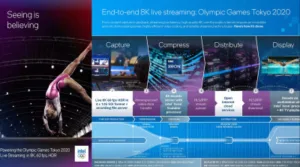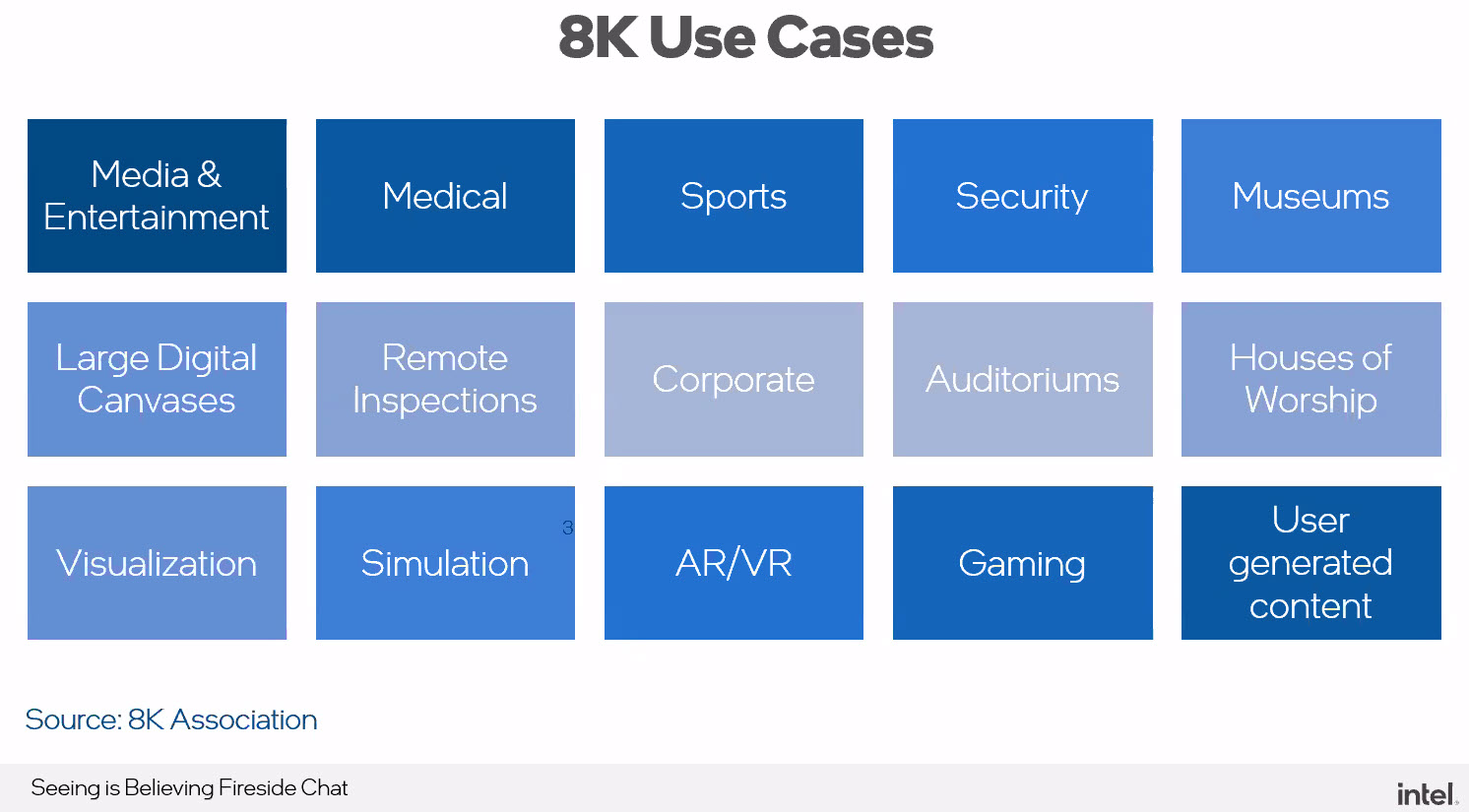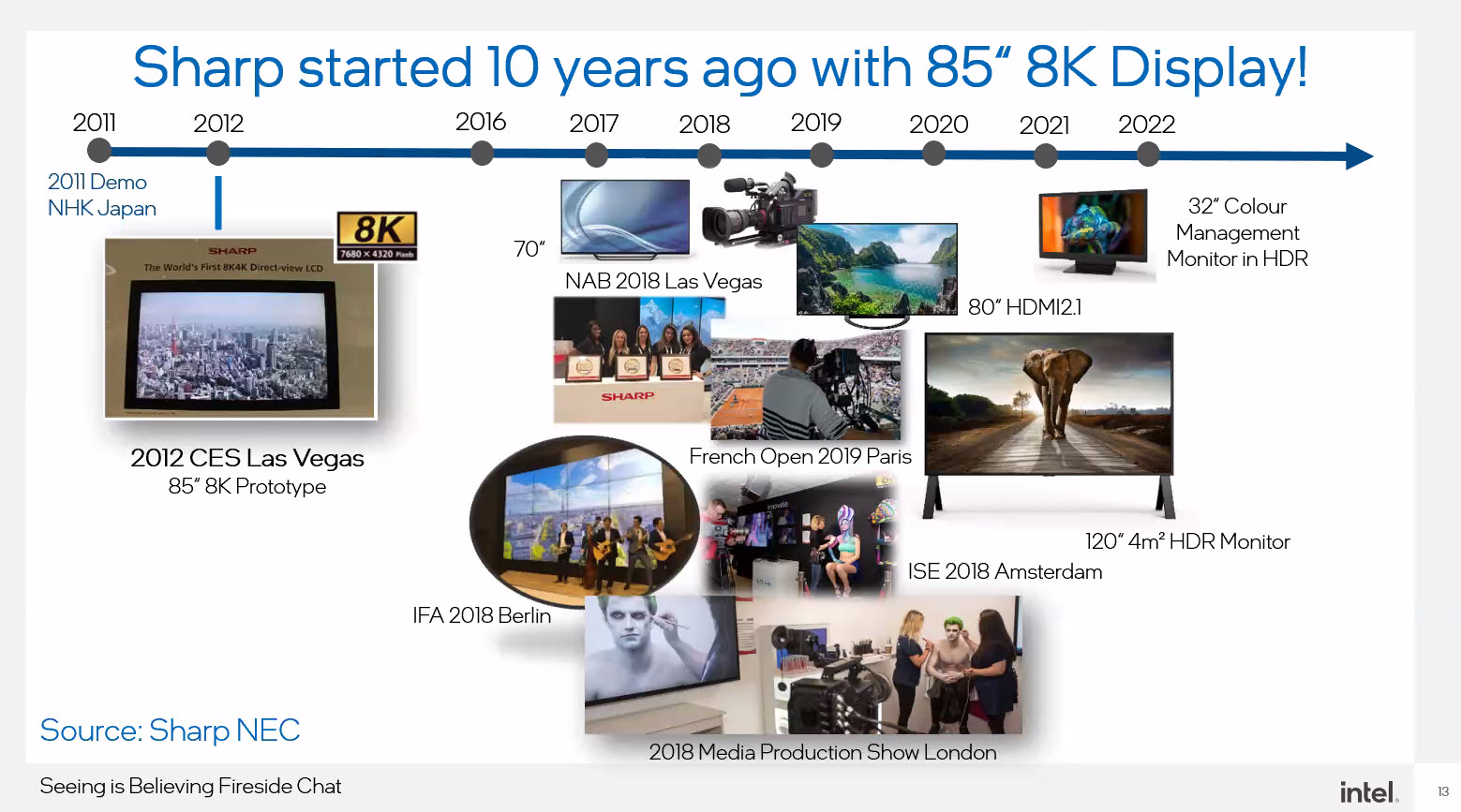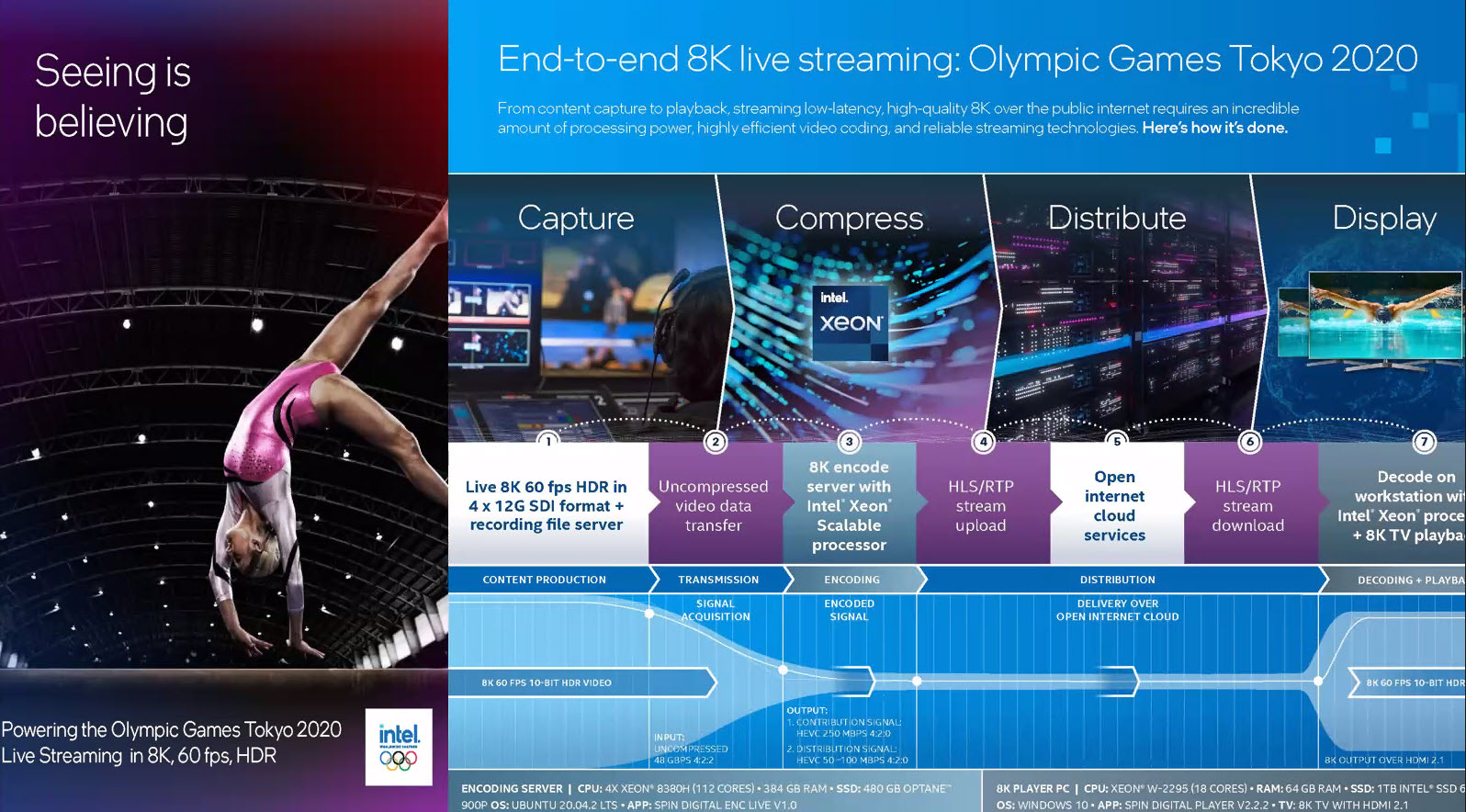The 8K Association, perhaps with a nod to the close timing of the annual US ‘state of the nation’ address, held a webinar to talk about 8K developments and technology. It was called ‘Seeing is believing: Everything you need to know about 8K in live broadcasting and professional displays’ – they didn’t add the “(but were afraid to ask!)”.
Chris Chinnock, a regular contributor to Display Daily and the Executive Director of the 8K Association started the session, moderated by Bradley Cooper of Digital Signage and which was still available online here when this article was published.
Chinnock started by highlighting that 8K is not just about spatial resolution, it’s also about HDR and, in the future, High Frame Rate (HFR). The use cases of 8K are very clear in entertainment, but this webinar was focusing on professional applications. Of course, those creating content will be mostly professionals.
In movies and entertainment (M&E), UltraHD (or 4K) is the standard for content capture and also for display. There are plenty of 8K cameras and capture systems, but little of the content is finished in 8K. There are also plenty of 8K TVs, but prices will decline (although I noted that Samsung’s 2022 8K TVs are not cheaper than last years).
Large Digital Canvases
8K is being used professionally to produce ‘large digital canvases’ in retail, in theatres and even in planetariums. There are big 8K LED displays and they are also being created in theme parks. The cost of 8K remains a challenge, as is local distribution and content availability. Displays can be monolithic or tiled.
Events are another application, especially sports and even e-Sports, which is a big growth category. Houses of worship and training organisations are looking at using 8K. Sports events often use multiple camera positions, but the sheer scale of the resolution means that sometimes multiple positions can be replaced by single 8K cameras. There is new software that is becoming available that can automatically track individuals in the frame and crop to FullHD or UltraHD windows. Workflow and distribution is still a challenge – there are some common themes evolving in that area.
Light field and stereo displays can really exploit the extra resolution of 8K. Google’s Project Starline shows how video conferencing can benefit from displays with depth.
Sharp Has a Decade in 8K
Peter Heins, a veteran of Sharp in Europe, and now with NEC Sharp Display Solutions, explained how the company has been developing many parts of the 8K ecosystem for a decade after showing an 85″ 8K display at CES in 2012. The firm has cameras, processing, storage and delivery technology as well as displays. It has been working on 8K for sports for some time and captured the French Open tennis in 2019 in 8K, using 5G technology to send the video signal from the camera to the broadcast centre. 5G and AI are technologies that help to make the most of 8K, he said.
Sharp in 2019 opened an ‘8K Eco Lab Creative Studio’ in Tokyo, although he hasn’t been there. He pointed out that Sharp has shown a 120″ LCD with 8K which is big enough to show a full size Harley Davidson motorbike! It has also developed a 32″ miniLED display that can support up to 1,000 cd/m² and has a ‘complex system’ for full HDR colour management. It’s so fine, he said, that you can ‘put your nose on the screen and still not see the pixels’.
Intel Looking to Enable 8K Delivery
Next to speak was Ben Cope of Intel, which sponsored the webinar. He said that having the displays is important, but you really have to enable the market. He pointed out the need for processors, but also for the FGPAs that Intel makes. The firm has been developing a ‘solution stack’ and feels that its Gen 12 chips can really make a difference to 8K playback.
Ravindra Velhal of Intel then talked about the work that Intel has done on broadcasting since NHK’s pioneering work at the Olympics in 2012. He has made tests at the Tokyo Olympics – creating a total of 200+ hours broadcast and more than 416 hours in total. Content was publicly deployed with Globo TV in Brazil. The main processing was on a 112 core server with 384GB of RAM. It created a stream of 250Mbps (compressed from 48Gbps of raw data) for contribution and that was compressed to 50-100 Mbps for distribution. The streamed content had a delay of 10-14s using HLS, but down to 2 seconds for RTP – that’s the total time from camera to display. The 8K content uses a huge amount of storage, the Olympics content took about 4.7 petabytes as captured and compressed to 17TB for worldwide distribution.
Velhal said that he was especially impressed when he saw a judo competitor lose a contact lens – the lens was actually visible. When encoding, there tended to be a trade off between the efficiency and the latency, which is to be expected, I think. The content from the Olympics was seen in a number of sites, but you can’t make them openly available because of rights issues (it was shown in ‘Authorised RHB geos only’, Intel asked us to add). Intel is aiming to create content for Olympic Broadcasting Services, rather than distributing content itself.
Intel thinks that there is around a seven year cycle in video technology – it took that long for UltraHD to get going and 8K will take some time but, he is confident, we will get there. Even 16K has applications in GIS and medicine as well as sport. For higher resolutions, Velhal said, higher frame rates are important. However, as there are 33 million pixels in each frame, HFR can generate a lot of data.
Questions
After the presentations there was a live Q&A session. The first question was about 8K in digital signage. Cope said that in many ways, 8K is already here as a 2 x 2 video wall with UltraHD displays has 8K of resolution. Intel has developed its SDM Smart Display Module, which can support a ‘very capable PC’ in a relatively small slot in the display.
Chinnock said that some applications for 8K need the resolution, but also need arbitrary shapes – for example in LED volumes for virtual production.
He finished by responding to the question of ‘what’s next after 8K?’. He said that 16K and 32K could be very helpful in developing light field displays. (BR)
(Just for your information, Intel clarified a couple of the points above after publication, and they were amended but nothing that was material to the content).






